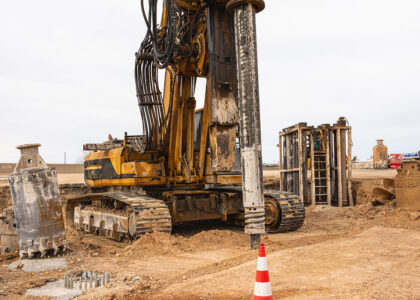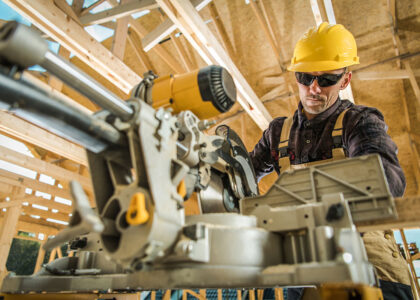Every building starts with a vision. Whether it’s a residential home, commercial space, or infrastructure development, turning that idea into reality requires a carefully planned construction process. In this blog post, we walk you through the essential stages involved in building a construction project, the challenges you may face, and how to ensure successful delivery.
1. Project Planning and Feasibility
Before any physical work begins, the first and most crucial step is planning. This phase sets the foundation for the entire project.
Key elements:
-
Defining the project scope
-
Budget estimation
-
Site selection and analysis
-
Regulatory and zoning compliance
-
Feasibility studies
A strong plan reduces risks and ensures everyone involved is aligned with the project goals.
2. Design and Engineering
Once the project is deemed feasible, it moves into the design phase, where architects and engineers develop detailed blueprints.
Design stages typically include:
-
Conceptual design
-
Schematic design
-
Design development
-
Construction drawings
During this phase, decisions are made about the building’s layout, materials, structural systems, and aesthetics. Engineering input ensures the building is safe, functional, and code-compliant.
3. Permits and Approvals
No project can legally begin without the right permits and regulatory approvals. This step varies by location but often includes:
-
Building permits
-
Environmental assessments
-
Fire and safety approvals
-
Utility connections and site access permits
Delays in this step can stall the entire project, so it’s important to work with local authorities early and proactively.
4. Pre-Construction Preparation
Before breaking ground, several activities take place to prepare the site:
-
Site clearing and leveling
-
Temporary facilities (site office, fencing, signage)
-
Procuring materials and equipment
-
Selecting and briefing subcontractors
A thorough pre-construction checklist helps avoid costly issues during execution.
5. Construction Execution
Now the actual building begins. This is the most visible and labor-intensive part of the project.
Key phases during construction:
-
Foundation work
-
Framing and structural systems
-
Roofing and exterior finishes
-
MEP installations (mechanical, electrical, plumbing)
-
Interior finishing (walls, flooring, painting)
Project managers monitor progress, quality, budget, and safety throughout the build.
6. Monitoring and Quality Control
Quality assurance and control are critical during every phase of construction.
Typical QA/QC tasks include:
-
Regular site inspections
-
Testing of materials and systems
-
Ensuring adherence to building codes and specifications
-
Addressing change orders and on-site issues
A strong QA/QC process protects the integrity of the final structure.
7. Project Handover and Close-Out
Once construction is complete, the project enters the handover phase. This includes:
-
Final inspections and certifications
-
Punch list (items to fix or complete)
-
Delivery of as-built drawings
-
Handover of keys and documents
-
Client training on systems (e.g. HVAC, lighting)
After handover, a post-construction review helps identify lessons for future projects.
8. Maintenance and Operation
Even after completion, the building must be properly maintained. Facility management and routine inspections ensure the structure remains safe, functional, and efficient.
Final Thoughts
Building a construction project is a complex but rewarding process. From idea to execution, each phase requires careful coordination, clear communication, and expert knowledge.
Whether you’re an owner, contractor, or project manager, understanding the full lifecycle of a construction project helps you make better decisions and deliver successful outcomes.
Are you planning a construction project? What challenges have you faced in your past builds? Share your experiences in the comments below.





